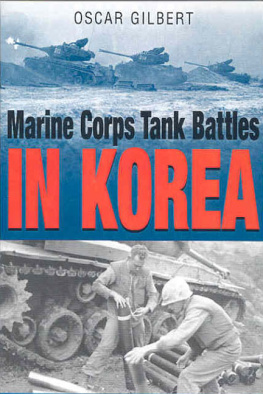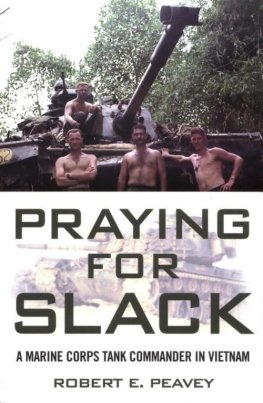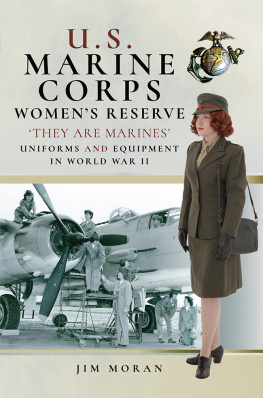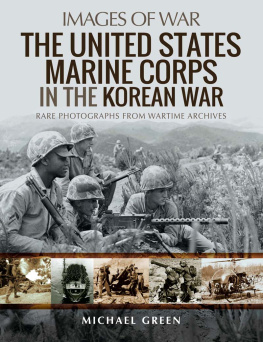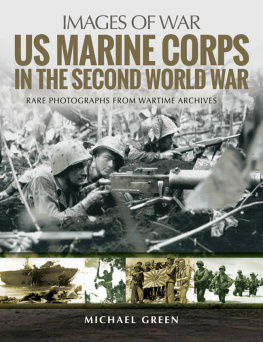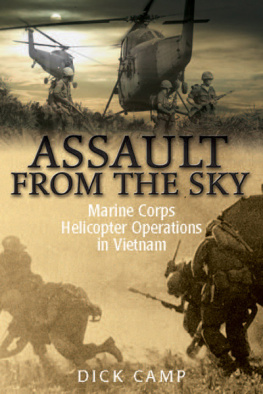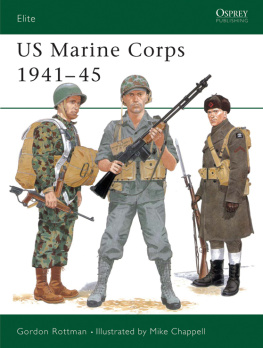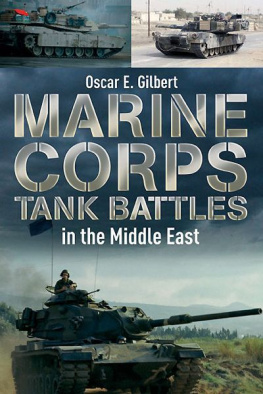Also by Oscar E. Gilbert
Published by
CASEMATE
908 Darby Road, Havertown, PA 19083
Phone: 610-853-9131
2003 by Oscar E.Gilbert
All rights reserved.
No part of this publication may be reproduced, stored in a retrieval system, or transmitted, in any form or by any means, electronic, mechanical, photocopying, recording, or otherwise, without the prior written permission of the publisher.
Typeset and design by Savas Publishing & Consulting Group
ISBN: 1-932033-13-0
Digital Edition ISBN: 978-1-61200-0268
First edition, first printing
Cataloging-in-Publication data is available from the Library of Congress
Printed in the United States of America
908 Darby Road
Havertown PA, 19083
For Oscar E Gilbert Sr., James D. Rittmann Sr., and all the other soldiers, marines, sailors, airmen, and coasties who did their duty in anonymity.
Photo inserts follow pages 122 and 218. Images of many of the Marines whose stories make up this book have been placed in the Epilogue.
Preface
I have worked as a scientist for over thirty years now, and one lesson I have learned from that career is that although you may start out with an idea you want to prove, the facts often lead down a very different path. So it was with the research for this book.
Lieutenant Colonel Ken Estes and I both began research into the real story of Able Company, 1st Tank Battalion in the defense of the Pusan Perimeter during the summer of 1950 (a project I hope we can one day complete). We both assumed that Able was a hand picked (gold-plated in the Marine Corps vernacular) team. To our surprise, it turned out to have been cobbled together from whatever personnel were availableincluding a few transients who simply had the ill fortune to be passing through Camp Pendleton at the time. Like a real-life clich from a Hollywood movie, this motley group went on to become one of the least known but most deadly armored units in American military history. Alas, the men of Able Company were not the super warriors of media myth. They were just typical Americans and Marinesgood men well led. In their commonness they were representative of all the good men who struggled in the obscurity of the Korean War.
Korea has rightly been called The Forgotten War, in part because it was fought at a time when the national attention was focused on the post-World War II economic boom. In a larger sense, the Korean conflict has been willfully forgotten, probably because it was the first war the United States lost. It was not lost in the traditional sense of a military defeat, but it was arguably the first struggle in which the nation was unable to impose its will, at least in the short term, by force of arms.
The forgetting began even as the war was being fought. Men and women served a tour in Korea and then, one by one, slipped quietly and gratefully back into society. No one wanted to hear their tales of mundane day-to-day terror with little in the way of tangible gain to show for it. In the end, there were no heroic accounts of final victory over a reviled enemy. And so the warriors of Korea slipped into the twilight of the national memory, overshadowed by the victors of World War II and eventually by the survivors of the even more frustrating struggle in Vietnam. It was a twilight ill-deserved.
Probably no one has been so forgotten as the tank and armored vehicle crewmen who served in Korea, not only those from the U. S. Marine Corps and U. S. Army, but also the contingents from the other United Nations forces. While the contributions of the tanks and tank crewmen were, at least in a relative sense, not so badly slighted as those of the men who fought World War II in the Pacific, published references are few. In large part this is because so little has been written about the war at all. What little has appeared deals largely with the romancesuch as it wasof the first jet-powered war in the air, and the experiences of the infantry in their grisly day-to-day struggle for survival. The exceptions are some of the Fiftieth Anniversary Monographs published by the Marine Corps Historical Branch, Lee Ballengers Korean War trilogy, and a few works by Jim Mesko and Simon Dunstan. The works of the latter two writers were designed for use by scale model builders rather than by the general reader, and as such are primarily pictorial rather than operational or experiential histories.
Marine Corps Tank Battles in Korea is a small effort to clarify some of the lesser-known aspects of the war, and to depict what the war was like for some of the doubly forgotten warriors. It is an effort that is, by its very nature, foredoomed to failure. Most of us, thank God, will live out our lives with no understanding of what the combat in Korea was like for these men.
Tanker Ben Busch summed it up well when he told me, Thats why I never talk to civilians. They ask, What was the war like? How do you explain it? I dont even try.
Acknowledgments
Once again I must thank the cast of characters who played major roles in preserving a bit of history. Foremost, of course, are the men who were interviewed for this project, each of whom are listed separately in the section on interview sources.
Don Gagnon (Master Gunnery Sergeant USMC, Ret.), the editor of the Marine Corps Tankers Association Magazine, not only suggested key people for interviews but also provided old copies of the Associations publications and invited me to annual meetings of the Association as his guest. Don also alerted me to a private reunion of the 3rd Platoon of Able Company, and interviews and discussions there allowed me to begin the task of pursuing the largely untold story of the tank company attached to the Provisional Marine Brigade in the defense of the Pusan Perimeter.
Colonel Ed Bale (USMC, Ret.), one of the legendary Marine tank officers, provided me with the means of contacting many officers who served in the latter part of the conflict. Gil Stauss was very helpful in my efforts to track down members of the 1st Marines Anti-Tank Company. Lee Ballenger freely shared materials, sources, and contacts from his own research that resulted in his two books (of a planned trilogy) on the war in Korea, and particularly the story of Operation Clambake.
Colonel John Williamson (USMC, Ret.) provided me with a copy of his privately published memoir of the war, and Colonel Vaughn Stuart (USMC, Ret.) supplied me with a copy of an unpublished manuscript detailing his experiences in the Chosin Reservoir Campaign. Both men have graciously allowed me to quote extensively from their works. Roger Chaput (Major, USMC, Ret.) provided a copy of the volume of memoirs, photographs, and general information he and his daughters compiled for the 3rd Platoon, A Company reunion.
Research Librarian Debbie Gummeiny and the staff of the Maude Marks Branch of the Harris County, Texas, Public Library helped track down and obtain copies of period references. Lena Kaljot of the Marine Corps Historical Center, and the staff of the National Archives at College Park, Maryland, helped locate the official photographs. Some of the quotations for chapter introductions are drawn from one of Lenas sidebars in Fortitudine , the bulletin of the Marine Corps Historical Program. Don Gagnon and Lt. Colonel Harry Milne (USMC, Ret.), Roger Chaput, and Jim Mesko helped me to locate and obtain additional official photographs unavailable through other sources. Harry Regan, Charles Batherson, Ben Beck, and Robert Schmitz provided personal photographs. Dieter Stenger and Ken Smith-Christmas of the Museums Branch helped me identify additional sources of information, and Col. Elliot Laine (USMC Ret.) helped clarify questions concerning the limited use of M4A3 (76mm.) tanks by the Marines.

